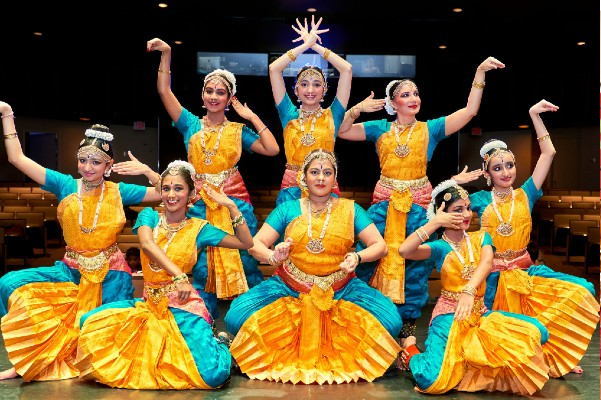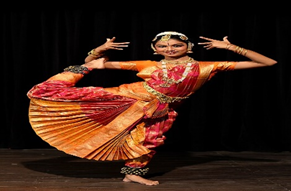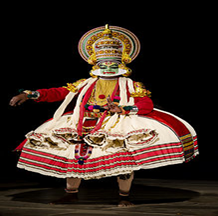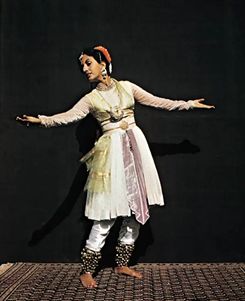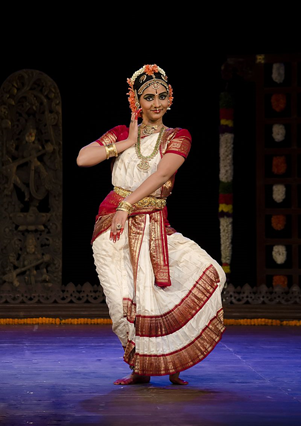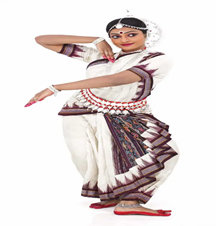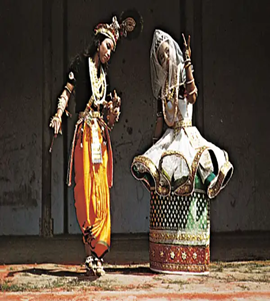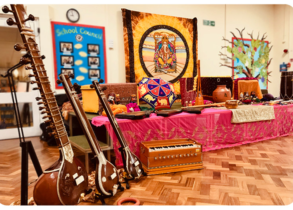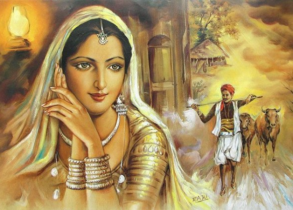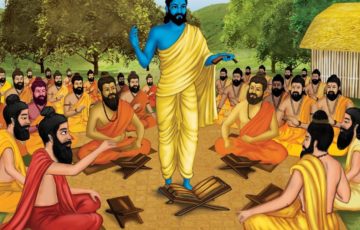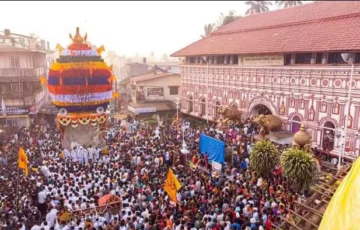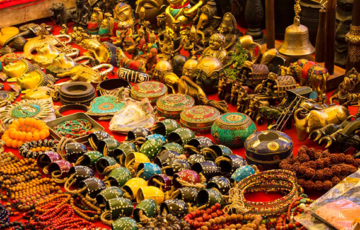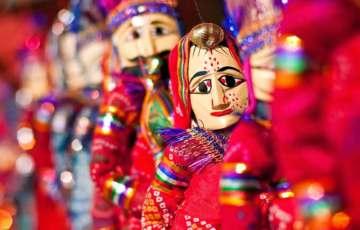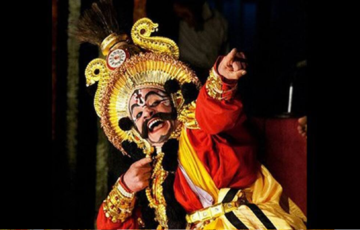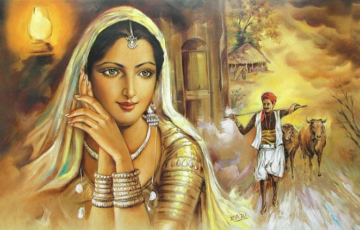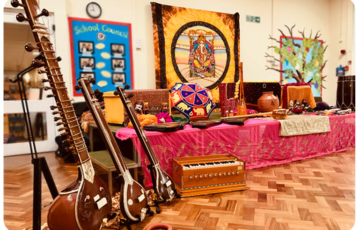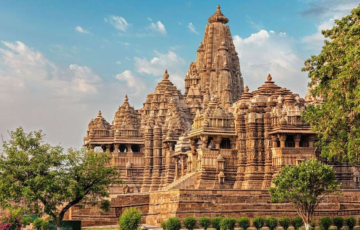INDIAN DANCE
Introduction
- Bharata’s Natya Shastra narrates how Lord Brahma, in response to the Gods’ quest for amusement, formulated Natya Veda—the fifth Veda—by amalgamating elements from the four Vedas.
- Natya seamlessly incorporates dance, drama, and music, incorporating Pathya from Rig Veda, Abhinaya from Yajur Veda, Geet from Sam Veda, and Rasa from Atharva Veda.
- This emphasizes the divine significance of dance in Indian culture, exemplified by Shiva’s tandava dance symbolizing creation, preservation, and destruction. Indian mythology is replete with dance expressions, ranging from Shiva’s tandava to Parvati’s feminine response.
- Bhimbetka’s community dancing engravings and the Harappan Civilisation’s Bronze dancing girl sculpture underscore dance as a form of social entertainment.
- The earliest formal reference to dance is found in Bharata’s Natyashastra, a comprehensive compilation between 200 BC and 200 AD, detailing the techniques, postures, emotions, ornaments, stage, and audience of Indian classical dance. Bharata Muni regards dance as the ‘complete art,’ encompassing music, sculpture, poetry, and drama.
Aspects of Dance
- In Natya Shastra, Indian classical dance is defined by two fundamental aspects:
- Lasya – Embodies grace, bhava, rasa, and abhinaya, representing the feminine qualities of dance.
- Tandava – Emphasizes rhythm and movement, portraying the male aspects of dance.
- According to Abhinaya Darpan (5th–4th century BC), Nandikeshwara’s influential treatise on dance, an act is categorized into three essential components:
- Nritta – Basic dance steps performed rhythmically, without expression or mood.
- Natya – Dramatic representations that relate to the narrative conveyed through the dance performance.
- Nritya – Involves mime and various expression techniques, including mudras, addressing the sentiment and emotions evoked through dance.
- Nandikeshwara further delves into Nayaka-Nayika Bhav, where the eternal deity assumes the role of the hero or Nayaka, and the devotee performing the dance portrays the heroine or Nayika. The dance communicates nine rasas or emotions.
| · Shringara: Expresses love.
· Roudra: Conveys anger. · Bibhatsa: Signifies disgust. · Veera: Embodies heroism. · Shaant: Captures peace and tranquility. · Haasya: Portrays laughter and comedy. · Karuna: Depicts tragedy. · Bhayanak: Evokes horror. · Adbhuta: Elicits a sense of wonder. |
- These moods and expressions are communicated through the utilization of mudras, which integrate a fusion of hand gestures and body postures. A set of 108 fundamental mudras is utilized to represent unique emotions, achieved through various combinations.
Indian Classical Dance Forms
- Distinctive dance styles have flourished in various regions of India, each carrying its unique intricacies. Despite these variations, all classical dance forms adhere to the foundational principles outlined in the Natya Shastra, emphasizing the crucial role of a guru in authentic knowledge transmission. The guru imparts the wisdom of various traditions, known as sampradayas, to the disciple, forming the essence of the ‘guru-shishya parampara’ in Indian classical art.
- Currently, according to the Sangeet Natak Akademi, India recognizes eight classical dance forms, namely Bharatnatyam, Kuchipudi, Kathakali, Mohiniattam, Odissi, Manipuri, Kathak, and Sattriya.
Bharatnatyam (Tamil Nadu)
- The Abhinaya Darpana by Nandikesvara is a pivotal text for comprehending the technique and grammar of body movement in Bharatnatyam dance.
- Bharatnatyam is celebrated for its ekaharya style, where a single dancer assumes multiple roles within a single performance.
- The dance involves graceful movements of the leg, hip, and arm, with expressive eye movements and hand gestures conveying a spectrum of emotions.
- The accompanying orchestra typically features a vocalist, mridangam player, violinist or veena player, flautist, and cymbal player, with the Nattuvanar directing the dance recitation.
- In its standard structure, the dance is usually divided into seven main parts – Alarippu, Jatiswaran, Shabda, Varna, Pada, Thillana, and Sloka.
- Bharatnatyam poses adorn the gopurams of the Chidambaram temple in Tamil Nadu.
- Krishna Iyer and Rukmini Devi Arundale played pivotal roles in reviving and elevating the dance form to its former popularity and prominence.
Kathakali
- Kathakali, arising from the rich cultural heritage of Kerala, India, is a captivating blend of dance, music, and acting intricately woven into dramatized narratives inspired by Indian epics. Influenced by indigenous ritual performing arts like Chakiarkoothu, Koodiyattam, Krishnattam, and Ramanattam, Kathakali showcases a transformative journey, where performers undergo a captivating metamorphosis with elaborate make-up and intricate costumes.
- In this visual spectacle, detailed masks, voluminous skirts, and ornate head-dresses are tailored to embody specific roles—kings, gods, or demons—each characterized by unique makeup and attire. The collaborative essence is evident as vocalists narrate tales, harmonizing with percussionists providing rhythmic accompaniment through traditional instruments.
- A hallmark of Kathakali is the use of facial colors as a visual language to convey mental states. Green symbolizes nobility, black conveys wickedness, and red patches signify a fusion of royalty and evil. Performers employ intricate hand gestures, facial expressions, and eye movements, portraying a diverse spectrum of roles with authenticity and precision.
- Kathakali dancers maintain a distinctive posture, centering body weight on slightly bent and curved feet, enhancing the dance’s visual allure. Luminaries like Ramankutty Nair and Kalamandalam Gopi have significantly contributed to the art form’s heritage, their enduring impact resonating through the ages and leaving an indelible mark on Kathakali’s captivating legacy.
Kathak
- Kathak, originating from North India, derives its name from “Katha,” meaning a story.
-
- Initially performed in temples or villages, Kathak involved dancers narrating tales from ancient scriptures. The evolution of Kathak into a distinct dance form began in the fifteenth and sixteenth centuries, shaped by the influence of the bhakti movement.
- During this period, folk plays known as rasa lila portrayed legends of Radha-Krishna, seamlessly blending folk dance with the fundamental gestures of Kathak storytellers.
- The dance form underwent a significant transformation under the patronage of the Mughal emperors and nobility, particularly in the royal courts, where it acquired distinct features and developed into a unique style. Wajid Ali Shah, the last Nawab of Awadh, played a pivotal role in elevating Kathak to a major art form during his patronage.
- Typically presented as a solo performance, Kathak dancers often pause to recite verses before translating them into movements. The emphasis is prominently on footwork, with dancers skillfully controlling their movements, performing with straight legs, and adorned with ankle bells. Notably, Kathak stands as the only classical dance form intricately intertwined with Hindustani or North Indian music.
- Lady Leela Sokhey, also known as Menaka, played a crucial role in reviving the classical style of Kathak. Among the eminent figures in Kathak, legendary dancers such as Birju Maharaj and Sitara Devi have significantly contributed to shaping and enriching the legacy of Kathak, solidifying its status as a revered and timeless classical dance form.
Kuchipudi (Andhra Pradesh):
- Kuchipudi, named after a village in the Krishna district of Andhra Pradesh, boasts a rich tradition of dance-drama, formerly known as Yakshagaana. In the 17th century, Siddhendra Yogi conceptualized the Kuchipudi style of Yakshagaana, deeply rooted in the literary tradition of Yakshagaana. Guided by his guru Teerthanaaraayana Yogi, who composed the Sanskrit kaavya “Krishna-Leelatarangini,” Siddhendra Yogi laid the foundation for this dance form.
- Kuchipudi is presented both as a group dance drama and in solo performances. The costumes, ornaments, and jewelry play pivotal roles in the performance. Solo items include Manduka Shabdam (depicting the story of a frog maiden), Balgopala Taranga (a dance performed on the edges of a brass plate with a pitcher full of water on the head), and Tala Chitra Nritya (drawing pictures with dancing toes). Renowned Kuchipudi dancers include Yamini Krishnamurthy and Raja Reddy.
Mohiniyattam (Kerala):
- Mohiniyattam, the classical solo dance form of Kerala, derives its name from Mohini, an incarnation of Lord Vishnu. References to Mohiniyattam can be traced back to texts like “Vyavaharamala” (1709) by Mazhamagalam Narayanan Namputiri and “Ghoshayatra” by poet Kunjan Nambiar.
- This dance form was structured into its present-day classical format by the Travancore Kings, Maharaja Kartika Tirunal, and Maharaja Swati Tirunal in the 18th-19th century.
- Primarily performed as a solo by female artists, Mohiniyattam features circular movements, delicate footsteps, and subtle expressions. Drawing inspiration from Nangiar Koothu and female folk dances like Kaikottikali and Tiruvatirakali, Mohiniyattam incorporates elements of Bharatanatyam (grace and elegance) and Kathakali (vigour).
- Characterized by its more erotic, lyrical, and delicate nature, Mohiniyattam performers, such as Sunanda Nair and Pallavi Krishnan, contribute significantly to this graceful dance form. The dancers adopt realistic make-up, wear simple Kasavu sarees from Kerala, and present lyrics in Manipravala, a medieval South Indian language combining Tamil-Malayalam and Sanskrit.
Odissi (Odisha):
- Originating from the state of Odisha, Odissi revolves around the lores of incarnations of Lord Vishnu and verses from Jayadeva’s Gita Govinda.
- Known for its soft dance style accompanied by soothing lyrics, Odissi shares similarities with Bharatanatyam in terms of mudras (hand gestures) and expressions. Often described as a ‘mobile sculpture,’ Odissi incorporates two major postures: Tribhanga (deflection at the neck, torso, and knees) and Chowk (a position imitating a square).
- Eminent performers in Odissi include Sonal Mansingh and Kelucharan Mohapatra.
Sattriya (Assam):
- Introduced in the 15th century by the Vaishnava saint and reformer Sankaradeva, Sattriya dance serves as a medium for propagating the Vaishnava faith in Assam.
- Evolving into a distinctive style, it closely associates with the Sattras (Vaishnava monasteries), earning the name Sattriya. Governed by strict principles regarding hastamudras (hand gestures), footwork, attire (aharyas), and music, Sattriya encompasses two separate streams: Bhaona-related repertoire and independent dance numbers like Chali, Rajagharia Chali, Jhumura, and Nadu Bhangi. Notably, Chali is characterized by gracefulness and elegance, while Jhumura is marked by vigor and majestic beauty.
Manipuri (Manipur):
- Manipuri dance traces its origin to ancient times, extending beyond recorded history. Associated with rituals and traditional festivals in Manipur, the dance has legendary references to Shiva, Parvati, and other gods and goddesses involved in the creation of the universe.
- Lai Haraoba, meaning “merrymaking of the gods,” serves as the earliest form of dance, performed ceremonially with song and dance. Maibas and maibis (priests and priestesses) play a crucial role in re-enacting the theme of the world’s creation.
- The popular Rasleela dances of Manipur originated during the reign of the 18th-century King Bhagyachandra. Manipuri dance has a diverse repertoire, with Ras, Sankirtana, and Thang-Ta being the most popular forms. The dance is accompanied by the Kirtan form of congregational singing, known as Sankirtana, where male dancers play the Pung and Kartal.
- Unlike many other dance forms, Manipuri dancers do not wear ankle bells, allowing for the preservation of delicate body movements without rhythmic interference.
Folk Dances of India
- Folk dances, deeply rooted in tradition and culture, encapsulate celebratory expressions of dance that have been handed down through generations within specific communities, regions, or cultures.
- These dances hold a significant place in a culture’s heritage and are commonly presented during various festivals, social gatherings, and significant events. Globally, folk dances exhibit a diverse array of styles, musical accompaniments, and unique attire, each reflecting the distinct characteristics of its originating culture.
- Indian traditional dances, known for their vibrancy and dynamic expressions, often showcase performances with both men and women dancing together or separately.
- The costumes worn during folk dances are frequently distinguished by vibrant colors, elaborate embellishments, and intricate motifs, enhancing the visual allure of the performances. Now, let’s delve into some of the diverse Indian folk dances.
Folk Dances of Northern India
- Dumhal (Jammu and Kashmir): Preserved by the Rauf tribe of Jammu & Kashmir, the ancient Dumhal dance features men adorned in long, colorful robes and tall conical caps, performing around a fixed banner placed in the ground.
- Hikat (Kashmir): Executed in groups, Hikat involves dancers holding hands and moving in circular patterns, adjusting their pace to the accompanying music. Starting slowly, the dance gradually gains momentum.
- Hurka Baul (Uttarakhand): Linked to maize and paddy cultivation, this storytelling dance form in Uttarakhand features a singer narrating heroic battle stories while dancers act out the tales through their movements.
- Chapeli (Uttarakhand): A traditional dance from the Kumaoni region, Chapeli is a graceful, slow-paced performance by women during cultural and social events.
- Nati (Himachal Pradesh): Nati, a lively folk dance in Himachal Pradesh, involves group dancing and singing in a circular formation. Dancers wear traditional Himachali attire and incorporate rhythmic movements with wooden sticks.
- Bhangra (Punjab): Originating from Punjab, Bhangra is a high-energy folk dance performed by men during harvest seasons and festive occasions. It features dynamic footwork, lively music, and colorful turbans.
- Giddha (Punjab): Primarily performed by women, Giddha is a graceful dance from Punjab that includes singing, clapping, and storytelling through expressive movements, often centered around everyday life and love.
- Dhamyal (Haryana): ‘Dhamyal’ or ‘Dhuph’ is a popular folk dance of Haryana, with male dancers playing a circular drum (‘Dhuph’). The dance is a celebration after a day’s work in the fields.
- Raslila (Uttar Pradesh): Originating in the Braj region of Uttar Pradesh, Raslila is a traditional dance drama depicting the divine love story of Lord Krishna and Radha. Manipur also has its form of Raslila as a classical dance drama.
- Mayur Nritya (Uttar Pradesh): Prevalent in Uttar Pradesh, Mayur Nritya, also known as the peacock dance, involves dancers wearing specially designed clothes resembling peacocks. It is performed as an offering to Lord Krishna.
- Charkula (Uttar Pradesh): Originating from the Braj region of Uttar Pradesh, Charkula is a traditional dance with a unique element. The dance involves performers carrying a multi-tiered circular pyramid known as ‘Charkula.’ According to folklore, it is believed that Goddess Radha’s grandmother announced the birth of her granddaughter while balancing a ‘Charkula’ on her head. In the dance, women gracefully carry huge ‘Charkulas,’ which hold numerous lighted oil lamps, adding a mesmerizing visual element to the performance.
North-Eastern India Folk Dances
- Bardo Chham (Arunachal Pradesh): Performed by the Sherdukpens in the West Kameng District, Bardo Chham serves as a protective ritual against monthly evil forces. Dancers wear masks representing animals during this dance.
- Ponung (Arunachal Pradesh): A pre-harvest dance with women performers from Arunachal Pradesh. Holding hands in formations, they dance led by a male singer using a sword-like instrument called ‘Yoksha.’ Traditional attire includes a long black shirt and a red skirt.
- Bihu (Assam): An integral part of Bihu festival celebrations, this dance is performed by young men and women, accompanied by pipes and drums. The lyrics support the dance, propagating love, and dancers often form circles or rows.
- Bagurumba (Assam): Practiced by the Bodo tribe, Bagurumba is a dance form inspired by nature. Women performers, accompanied by drums and flutes, showcase different forms inspired by elements of nature.
- Nongkram (Meghalaya): Performed in May and November in the Khasi hills, Nongkram is a dance by boys and girls as a form of respect to the tribal deity. It demands great skills and energy.
- Hojagiri (Tripura): A festival dance performed during occasions like ‘Laxmi Puja’ and ‘Durga Puja.’ Women display grace by balancing bottles or lamps on their heads, while men handle the musical part.
- Dhol Cholom (Manipur): A drum dance dominating Manipuri dances, Dhol Cholom is performed during the Holi festival. Men display acrobatic moves while playing the drum, starting with a slow tempo and gradually accelerating.
- Cheraw (Mizoram): A dance involving skillful moves with bamboo staves. Men move the staves horizontally and vertically, while women dance between them, avoiding getting caught. The staves create a unique beat guiding the dancers.
- Chang Lo (Nagaland): A war dance celebrating victory over an enemy. Dancers, adorned in warrior costumes, display war tactics. Dramatic costumes add color to the performance, attracting admiration from women.
- Maruni (Sikkim): A highlight of Sikkim weddings, Maruni features performers accompanied by a joker called ‘Dhatu Waray.’ The dance, originating from Nepal, involves nine musical instruments called ‘Naumati Baja.’
Eastern India Folk Dances
- Chhau (Jharkhand, West Bengal, and Odisha): Chhau is a tribal martial dance form found in several states of Northern India, including Jharkhand, West Bengal, and Odisha. Dancers often wear elaborate masks and perform acrobatic movements to depict stories from Hindu epics and tribal traditions.
- Brita Dance (West Bengal): ‘Brita’ or ‘Vrita’ dance is usually performed to thank the local deity after recovering from a contagious disease, usually smallpox.
- Dalkhai (Odisha): This dance is performed by young women who are later joined by men playing drums and other instruments. Interestingly, the men address the women as their girlfriends throughout the play.
- Gotipua (Odisha): ‘Gotipua’ is a unique dance form where the performers are dressed as women. The dance is taken seriously by the boys to the extent that they don’t cut their hair to resemble women.
Folk Dances of Southern India
- Yakshagana (Karnataka): Yakshagana is a traditional folk theater form from Karnataka that combines dance, music, and storytelling. The performers, often in elaborate costumes and makeup, enact stories from the Mahabharata, Ramayana, and other epic narratives.
- Dollu Kunitha (Karnataka): Dollu Kunitha is a lively drum dance from Karnataka. It features dynamic and rhythmic drumming, along with energetic movements and leaps. This dance is often performed during cultural celebrations and rituals.
- Karagattam (Tamil Nadu): Karagattam is a traditional folk dance from Tamil Nadu that involves balancing a pot (karagam) on the head while performing various intricate steps and movements. It is often performed during festive occasions.
- Kolannalu (Andhra Pradesh): Popularly known as the ‘stick dance’, ‘Kolannalu’ involves a group of dancers forming two circles. While the inner circle receives a strike on their sticks, the dancers forming the outer circle deliver the strike.
- Kolattam (Tamil Nadu and Andhra Pradesh): Kolattam is a group dance in which dancers form patterns and move rhythmically, often accompanied by sticks. It is a celebratory dance performed during harvest festivals and other special events.
- Perini Shivatandavam (Telangana): Perini Shivatandavam is a traditional dance from the Telangana region. It is characterized by vigorous and acrobatic movements, with male dancers depicting Lord Shiva’s Tandava dance.
- Oyilattam (Tamil Nadu): Oyilattam is a traditional folk dance in Tamil Nadu that features intricate patterns created by dancers who carry small sticks. The dance is often performed during temple festivals and celebrations.
- Parai Attam (Tamil Nadu): Men folk play a percussion instrument called ‘Parai’ and dance to the rhythm they come up with. Traditionally, the dance was performed for various reasons and is one of the oldest dance forms in India.
- Karagattam (Tamil Nadu): Karagattam is performed while worshipping the goddess of rain. Dancers balance huge pots on their heads and dance to the tunes of musicians.
- Mayil Attam (Tamil Nadu and Kerala): This dance is similar to the ‘Mayur Nritya’ of Uttar Pradesh. Young girls are dressed to look like peacocks and perform to the beats of the musicians. The dancers often imitate the moves of a peacock.
- Kummi (Tamil Nadu and Kerala): Since this dance form originated when there were no musical instruments, it just involves women singing and clapping.
- Padayani (Kerala): Padayani is not only popular but is also pleasing to the eyes as colors form an important aspect of the dance. The dancers wear massive masks which often represent deities.
- Oppana (Kerala): Oppana belongs to the Mappila community of Kerala and is performed by young girls at weddings. The bride sits in the middle, and the dancing happens around her. Girls dance and clap rhythmically and are duly supported by a host of musicians. Pump organs, Tabla, Ganjira, and cymbals are used to create music.
- Theyyam (Kerala): Theyyam/Kaliayattam/Tira is performed in the temples and sacred groves of the northern region (Malabar). It is an ode to different regional deities and major gods. It is performed by men belonging to specific communities. Theyyams are believed to be a channel to the god.
- Thiruvathira (Kerala): It is a popular group dance performed during the harvest festival of Kerala, Onam. This dance is performed by women folk, moving in a circular movement, rhythmically at the Thiruvathira songs’ tune.
- Thidambu Nritham (Kerala): Thidambu dance is a ritual temple art form performed in the temples of North Malabar and Kasaragod District. Thidambu denotes the decorated replica of the deity in a temple that is usually taken outside for purposes like festivals and poojas. The dancing involves hopping on one leg, which makes it that much more difficult.
Folk Dances of Central India
- Gaur Maria Dance (Madhya Pradesh): The Gaur Maria dance is a vibrant and energetic performance by the Maria tribal community in Madhya Pradesh. It involves men and women dancing in pairs, depicting the everyday life and activities of the community, often focusing on themes of hunting and farming.
- Phulpati Dance (Chhattisgarh): The Phulpati dance is a traditional folk dance of Chhattisgarh, mainly performed by women. It features dancers balancing pots filled with flowers on their heads while dancing gracefully. This dance is commonly performed during festivals and special occasions.
- Karma Dance (Jharkhand and Chhattisgarh): The Karma dance holds significance in both Jharkhand and Chhattisgarh. It is a tribal dance performed to worship the deity of fertility, “Karma Devta.” Characterized by rhythmic movements, performers dance in circles to the beats of traditional instruments.
- Rai Dance (Chhattisgarh): The Rai dance is a traditional folk dance of the Kamar tribe in Chhattisgarh. Typically performed during agricultural festivals and weddings, the dance involves graceful movements and storytelling through expressions.
- Matki Dance (Madhya Pradesh): Matki Dance is a popular folk dance in the Malwa region of Madhya Pradesh, performed during the Holi festival. Dancers balance small earthen pots (matkis) on their heads while dancing to the rhythm of traditional music.
- Pandwani (Chhattisgarh): While not a dance, Pandwani is a traditional folk art form from Chhattisgarh involving storytelling through song and music. The narratives often revolve around the epic stories of the Mahabharata, with the singer-poet narrating the tales.
- Gendi (Chhattisgarh): The Gendi dance is a playful folk dance performed by women in Chhattisgarh. It involves balancing a clay pot or “gendi” on the head while dancing, often associated with festivities and celebrations.
- Saila Dance (Chhattisgarh): The Saila dance is performed by the Gond tribal community of Chhattisgarh, reflecting their cultural identity. Marked by the use of traditional instruments and colorful attire, the dance is a traditional expression of their heritage.
- Panthi Dance (Chhattisgarh): The Panthi dance is a significant folk dance in Chhattisgarh, performed during religious and cultural events. It depicts the religious fervor and devotion of the performers, often including singing and storytelling.
Folk Dances of Western India
- Lavani (Maharashtra): Lavani primarily belongs to the state of Maharashtra in Western India, and it is also popular in parts of Northern India, such as Vidarbha. Lavani is a dynamic and sensual dance form accompanied by traditional Maharashtrian music, known for its energy and vibrant costumes.
- Koli (Maharashtra): The Koli dance is performed by fishermen, incorporating elements of fishing and the sea. Both men and women participate in this interesting dance form, creating a visually captivating experience.
- Garba (Gujarat): Garba is a lively folk dance form that originated in Gujarat but is popular in many parts of Northern India, especially during the Navratri festival. It involves dancing in a circular formation to traditional music, and participants often wear colorful attire, creating a festive and celebratory atmosphere.
- Dandiya Raas (Gujarat): Dandiya Raas is a partner dance performed alongside Garba during the Navratri festival in Gujarat and other parts of Northern India. Dancers use colorful sticks (dandiyas) and engage in intricate patterns and footwork, adding a playful and rhythmic element to the festivities.
- Ghodemodni (Goa): Ghodemodni, also known as the ‘warrior dance,’ features performers dressed as warriors wielding swords. The dance portrays a war scenario, depicting a historical event where a king once captured the village where the dance form originated. The dance is characterized by strong and dynamic movements.
UPSC PREVIOUS YEAR QUESTIONS
1. With reference to Manipuri Sankirtana, consider the following statements: (2017)
1. It is a song and dance performance.
2. Cymbals are the only musical instruments used in the performance. G
3. It is performed to narrate the life and deeds of Lord Krishna.
Which of the statements given above is/are correct?
(a) 1, 2 and 3
(b) 1 and 3 only
(c) 2 and 3 only
(d) 1 only
2. With reference to the famous Sattriya dance, consider the following statements : (2014)
1. Sattriya is a combination of music, dance and drama.
2. It is a centuries-old living tradition of Vaishnavites of Assam.
3. It is based on classical Ragas and Talas of devotional songs composed by Tulsidas, Kabir and Mirabai.
Which of the statements given above is/are correct?
(a) 1 only
(b) 1 and 2 only
(c) 2 and 3 only
(d) 1, 2 and 3
3. Consider the following pairs : (2014)
1. Garba : Gujarat
2. Mohiniattam : Odisha
3. Yakshagana : Karnataka
Which of the pairs given above is/are correctly matched?
(a) 1 only
(b) 2 and 3 only
(c) 1 and 3 only
(d) 1, 2 and 3
4. In the context of the cultural history of India, a pose in dance and dramatics called ‘Tribhanga’ has been a favourite of Indian artists from ancient times till today. (2013)
5. Which one of the following statements best describes this pose?
(a) One leg is bent and the body is slightly but oppositely curved at the waist and neck
(b) Facial expressions, hand gestures and make-up are combined to symbolize certain epic or historic characters
(c) Movements of body, face and hands are used to express oneself or to tell a story
(d) A little smile, slightly curved waist and certain hand gestures are emphasized to express the feelings of love or eroticism
6. How do you distinguish between Kuchipudi and Bharatanatyam dances? (2012)
1. Dancers occasionally speaking dialogues is found in Kuchipudi dance but not in Bharatnatyam
2. Dancing on the brass plate by keeping the feet on its edges is a feature of Bharatnatyam but Kuchipudi dance does not have such a form of movements.
Which of the pairs given above is/are correct?
(a) 1 only
(b) 2 only
(c) Both 1 and 2
(d) Neither 1 or 2

